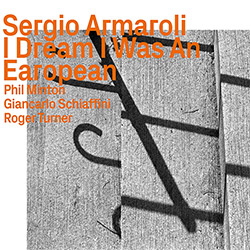
Two percussionists--vibraphonist Sergio Armaroli and drummer/percussionist Roger Turner-- and two brass players--trombonist Giancarlo Schiaffini and trumpeter Phil Minton, who doubles on voice improvisation--are heard in these studio recordings from Udine, Italy for nine "Dreams" that turn introspective slumber into restless visions through profoundly paced playing.
In Stock
Quantity in Basket: None
Log In to use our Wish List
Shipping Weight: 3.00 units
EU & UK Customers:
Discogs.com can handle your VAT payments
So please order through Discogs
Sample The Album:
Sergio Armaroli-vibraphone
Phil Minton-voice, trumpet
Giancarlo Schiaffini-trombone
Roger Turner- drums, percussion
Click an artist name above to see in-stock items for that artist.
UPC: 752156104520
Label: ezz-thetics by Hat Hut Records Ltd
Catalog ID: ezz-thetics 1045
Squidco Product Code: 32995
Format: CD
Condition: New
Released: 2023
Country: Switzerland
Packaging: Cardboard Gatefold
Recorded at Artesuno recording Studios, in in Cavalicco, Udine, Italy, on April 20th amd 21st, 2022, by Stefano Amerio.
"It was Elias Canetti who alerted us to the connection between the most simply definitive human action, walking, and the emergence of what it pleases us to call civilisation. The rhythms of walking, the march, the slow gathering of a crowd: these are all important operators in history. But Canetti, profound as his observation may have been, jumps at least a couple of steps. Breathing is the basic rhythm of our life, an observation whose practical implications are now only widely recognised in Eastern philosophical traditions and some branches of therapy. Advice on diaphragmatic breathing is dispensed for all manner of conditions; we're informed that shallow breathing leads to shallow thinking; that exhaling is the thing to concentrate on, leaving inhalation to manage itself. We leave wine to breathe before sampling it.
All of this, of course, has a profound implication for music. We understand without further explanation what is meant when we are told that a performance has been allowed to breathe, and we have all experienced that magical moment in a concert hall or club when we willingly but unconsciously hold in a breath so as not to disturb a delicate final cadence. Watching or reviewing a performance we praise "breath control" as one of the few technical arcanae we're even remotely qualified to comment. In short, the in-and-out of air is both a fundamental necessity for life and one of its highest refinements.
It might be argued that of the four gentlemen performing on this disc, only two are in any way directly concerned with breathing. We know that for singers and the players of wind instruments, the strength of the diaphragm, the configuration of the bronchii (an important early free-music document was actually called The Topography Of The Lungs) and the shape and disposition of the mouth-parts are all vital components. Not so much, we might think, for players of percussion, though these, in our music, are perversely the ones that we are most likely to observe out of breath. So, round and round it goes.
Take the beginning of "Bullett - Inher". Some kind of horn is lowing like a shofar. There are whistling sounds that might be birds and tiny metallic commentaries and soft chimes. But then there is the unmistakable sound of human breathing, urgent, ambiguous, a little disturbing. And, for me, the performances gather round that moment and take their meaning from it. In October 1969, underage but under the protection of a father who knew how to get round turnstiles and security guards, I was privileged to see the first British performance of Samuel Beckett's Breath at a small theatre club in Glasgow. Famously lasting about a minute, it covers an entire life from birth-cry to the same cry implying ecstasy and death, in a single inhalation and exhalation. Like Phil Minton, who like many British and European improvisers works in the same complex tradition as Beckett (check how often his name is invoked), Beckett had a wonderful sense of grim humour. The rubbish-strewn stage - all that preparation for a one-minute performance! - is a wry comment on what life consists of. Laughter, a sound that was once considered an appalling solecism in an improvised music setting (though only among the audiences and critics), is the pleasurable loss of breath, and while laughter doesn't explicitly play a part in the improvisations here, it is always somehow implied.
Giancarlo Schiaffini is constantly aware that the trombone is the instrument perhaps closest to the human voice, but also an instrument whose understood range takes in the sacred (as Mendelssohn insisted) and the comic. Armaroli and Turner remind us that the world in which we breathe and move is full of charged surfaces that give back audible reminders of our passage through it. Only ghosts don't make footfalls (another Beckett title!) that we can hear, don't need to open and close doors to effect passage. These men together are enacting over a longer duration a strong sense of life-as-lived. They are conspiring, not in the political or legal sense, but simply breathing-together. It isn't forbiddingly abstract music. It simply enacts our various ways of living together. Take a deep breath, and enjoy."-Brian Morton, September 7, 2022

The Squid's Ear!
Artist Biographies
• Show Bio for Sergio Armaroli "Sergio Armaroli is a composer, percussionist, vibraphonist, teacher and total artist. His actions resonate through various artistic and musical fields, that of jazz being, perhaps, his most practised. He declares himself to be a painter, concrete percussionist, fragmentary poet and sound artist as well as founding his work "within the language of jazz and improvisation" as an "extension of the concept of art"." ^ Hide Bio for Sergio Armaroli • Show Bio for Phil Minton "Phil Minton comes from Torquay. He played trumpet and sang with the Mike Westbrook Band in the early 60s- Then in dance and rock bands in Europe for the later of part of the decade. He returned to England in 1971, rejoining Westbrook and was involved in many of his projects until the mid 1980's. For most of the last forty years, Minton has been working as a improvising singer in lots of groups, orchestras, and situations, all over the place. Numerous composers have written music especially for his extended vocal techniques. He has a quartet with Veryan Weston, Roger Turner and John Butcher, and ongoing duos, trios and quartets with above and many other musicians. Since the eighties, His Feral Choir, where he voice-conducts workshops and concerts for anyone who wants to sing, has performed in over twenty countries." ^ Hide Bio for Phil Minton • Show Bio for Giancarlo Schiaffini "Giancarlo Schiaffini: composer, trombonist, tubist, born in Rome in 1942. He studies in Rome at regular public school, choosing classical address in the high school, and graduates in 1960. 1957: starts studying trumpet, switching two years later to trombone, composition and arrangement as self-taught. 1960: starts studying Physics at the University of Rome, where he graduates in 1965 discussing a work in Biophysics about "Physical and Chemical Analysis on Hybrids between DNA and RNA of Bacillus Megatherium". In the meanwhile, he plays jazz and appears as soloist in the first free-jazz concerts in Italy, in Gruppo Romano Free Jazz with Mario Schiano, Marcello Melis and Franco Pecori. Subsequently presents his own compositions and arrangements widely in the mid 1960's. In the same time he introduces himself into the "contemporary music" scene in Italy, in that time very lively and intriguing, soon becoming an outstanding performer, improviser and composer. 1966: plays as stage musician (tuba) in the Musical "Ciao, Rudy!", by Garinei-Giovannini-Trovaioli, starring Marcello Mastroianni. Later in the same year he starts working in a Transistor Factory held by Siemens, to develop first samples of Integrated Circuits. 1967: changes job to CNEN (National Committee for Nuclear Energy) in the Nuclear Studies Center in Casaccia (near Rome), as a Biophysicist, publishing on "The International Journal of Immunology", later working on the effect of radiations on Nucleic Acids in bacteria until 1975. 1968: plays in a Big Band with Lionel Hampton in Rome. 1970: He studies at Darmstadter Ferienkurse with Karlheinz Stockhausen, Gyorgy Ligeti and Vinko Globokar. In the same year he founds, with the composer/contrabass player Bruno Tommaso and the composer/clarinetist Jesùs Villa-Rojo, the chamber ensemble Nuove Forme Sonore, to explore the structural combinations between composition and improvisation in contemporary music. 1972: studies electronic music at Accademia di Santa Cecilia with Franco Evangelisti, and becomes member of the Gruppo di Improvvisazione di Nuova Consonanza (with Franco Evangelisti, Ennio Morricone, Egisto Macchi, Giovanni Piazza, Antonello Neri) until 1983. 1973: records the first LP leading his own group (a sextet) for the series "Jazz a confronto". From 1973 to 1975 he writes music for short movies. 1974: founds the Gruppo Romano di Ottoni performing Renaissance and Contemporary music. Since the same year, the association Nuove Forme Sonore, born with the chamber ensemble in 1970, is awarded a annual Grant from the Italian Government, to perform contemporary music concerts in Italy and abroad; tours Japan with a band playing sound tracks by M° Rustichelli. 1975: leaves his work on Physics and starts teaching Trumpet and Trombone at the Conservatory "Gioacchino Rossini" in Pesaro. In the same year he premieres "Tre pezzi per trombone solo" by Giacinto Scelsi, and collaborates with John Cage during his Italian Tour. 1976: is among the founders of first Italian Popular Music School in Testaccio (borough of Rome). 1977: Plays with Globe Unity Orchestra in Modena (Festival dell'Unità) 1978: Performs in Reggio Emilia in English-Italian Impro Meeting (with Paul Rutherford, Evan Parker, Barry Guy). 1979: Plays in concert With ICPO led by Misha Mengelberg in Soncino; the concert is issued in LP (later in CD). With Alex Von Schlippenbach, Evan Parker and Paul Lovens plays as guest soloist with Italian Radio Big Band. 1980: composes the first of a long series of multimedia pieces ("I sette corvi", from Grimm's fairy tale, for instruments, tape and live images); changes Conservatory (from Pesaro to the Conservatory "A. Casella" in l'Aquila). Plays in concert at Teatro dell'Opera di Roma with Bill Higgins, Albert Mangelsdorff and Manfred Schoof, with Big Band of Italian Radio, presenting new compositions. Plays with Globe Unity Orchestra in Saalfelden. Writes a treatise about improving technique and expression for trombone in contemporary music, published by Ricordi (Milan). Since 1980, for ten years, he cooperates with composer Luigi Nono, as one of the soloists of his last great compositions (Guai ai gelidi mostri, Omaggio a Kurtag, Prometeo, Risonanze erranti, Post-Prae-Ludium per Donau). 1981: invited by the Centre for Contemporary Italian Culture, plays at New York University and gives lessons about compositions of G. Scelsi, L. Berio and improvisation, cooperating with D. Ghezzo and B. Fennelly. 1982: composes his second multimedia piece on fairy tale "L'usignolo dell'Imperatore", for trombone, tape and live images and premieres it at Farnese Castle in Genazzano; returns to NewYork University for concerts at Lincoln Center and lectures; leads for one month the Radio production "Il mestiere del musicista", broadcasted by RAI (Italian National Radio). 1983: gives a lecture about brass instruments at Musik Hochschule in Freiburs im Breisgau (Germany); premieres Luigi Nono's "Omaggio a Kurtag", in Maggio Musicale Fiorentino, in Florence, and starts working with live electronics at Heinrich Stroebel Stiftung of Süd West Funk in Freiburg im Breisgau (Germany); starts teaching at Siena Jazz International Summer School. 1984: premieres "Guai ai gelidi mostri" in Baden-Baden and the opera "Prometeo" by Luigi Nono at Biennale Musica di Venezia. Plays with Roberto Laneri's Group at Yatra Jazz Festival in Bombay. Composes music and plays for the theatre piece "Pentesilea" (from Kleist) by Gianfranco Quartucci at Hebbel Theatre in Berlin. 1985: plays revised version of "Prometeo" by L. Nono at Teatro alla Scala (Milan). 1986: premieres "Risonanze erranti" by L. Nono in Köln (West Deutsche Rundfunk). Records the LP " Infernal Dream" for Tuba and live electronics at H. Strobel Studio in Freiburg i. B. and "Well Actually" for Splasch in duo with singer Tiziana Ghiglioni; is the producer for a Radio Series of New Music compositions. Composes music for ballet "REM", ccoreographer Luisa Gay. 1987: plays "Prometeo" at Alte Oper, Frankfurt a. M. and at Festival d'Automne in Paris, Theatre de Chaillot; premieres in Donaueschingen "Post-Prae-Ludium per Donau", for tuba and live electronics, dedicated to him by Luigi Nono 1988: composes "Tautovox", chamber opera for soprano, alto, trombone, live electronics and images (text by Pasquale Santoli, images by Alfredo Profeta); composes "Musica Edulis", extended piece for trombone and live electronics (commission of Festival di Nuova Musica di Fiastra); plays at Milanopoesia Festival with singer Silvia Schiavoni and live electronics, starting a long cooperation in composition and performances. Plays at Luigi Nono Festival inaugurating the Kleine Philarmonie in Berlin. 1989: seminar in Villeneuve d'Avignon about the music of Luigi Nono. 1990: plays solo concerts in Mexico DC dedicated to Giacinto Scelsi; cooperates with John Cage in Erlangen (Cage Festival); is a co-founder of the Italian Instabile Orchestra, including the best Italian soloists and improvisers, which will become one of the most important band of this kind in the world. 1991: Records a CD in solo for RCA, dedicated to New Music for Trombone. Plays "Prometeo" By L. Nono in Gibellina; flies to Melbourne for concerts and clinics at Melba University and Monash University; composes "Tuba Libre" for Big Band (commission of Italian Instabile Orchestra). 1992: composes "Cambio di rotta", for soprano, instruments, live electronics and images, for the anniversary of the Discovery of America (Text by P. Santoli, images by Ilaria Schiaffini and Marina Bindella); records the CD "About Monk" with his Nonet. 1993: Composes "Snow over Ireland" with Silvia Schiavoni for voice, trombone and live electronics, first piece of the suite "Dubs", based on Joyce's "Dubliners", which will be recorded on CD (YVP) in 1997. 1994: composes "Là les nuites sont toutes belles" (text by Silvia Schiavoni) and "Descend sur la terre" (Text by P. Santoli), multimedia operas with live electronics and multivision images by I. Schiaffini and M. Bindella and premieres them at Acquario Romano; second tour to India for Yatra Jazz Festival, with his Quintet. With this group records the CD "As a Bird", dedicated to Charlie Parker; records as well "Edula", for trombone and live electronics. Is invited by UNEAC for seminar and concerts in Cuba. Invited in Amsterdam as guest trombonist, conductor and composer by Instant Composers Pool Orchestra (led by Misha Mengelberg), with Henry Threadgill for a short tour in Holland and Belgium. Composes soundtrack for "Nosferatu" by Murnau, to be performed live in tour with a vocal/instrumental ensemble. 1995: invited again in Cuba; writes "Energico, rarefatto, vivo" for harpsichord.. Performs all Nono pieces in a Festival held in Lisbon at Gulbenkian Foundation. Performs Nono's music at Hunter College (New York City) in a concert dedicated tu 100 Years of Hertz Waves, led by Luciano Berio. Composes a piece for 5 marching bands to be performed in Pollenza (Macerata) 1996: Composes music for Choir for a ballet in Modena, coreographer Teri Weikel, and for the coreographer Ugo Pitozzi, in Bolzano; co-ordinates and plays a profile of Luigi Nono, for New Music Concerts (Toronto). Starts a cooperation with Luca di Volo and Claudia Bombardella on Klezmer Music. 1997: composes "Litania Sibilante" (commission of the Instabile's Festival in Pisa); records the suite "Dubs", with text by Silvia Schiavoni based on James Joyce's "Dubliners", for voice, instruments and electronics, published by YVP (Germany), "Tuba Libre", for tuba and live electronics, (Random Acoustics, Munich) and "The Missing Chainring" for trombone and electronics for the new label "Imprint Records". 1998: resident composer and performer (Trombone, Tuba, Electronics) at Upic Centre in Paris, with final concert at Cité des Sciences; composes music for the ballet "Pinocchio", choreography by Karole Armitage (commission of Maggio Musicale Fiorentino). 1999: writes the sound-track for the film "Tartarughe dal becco d'ascia"; composes music for concert band (commission by MM&T, Milan); plays Improvised Music in Chicago (Empty Bottle Festival), Jazz in DC (with Peter Fraize Trio), Contemporary Improvised and electronic music at NYU Composers Forum (New York University); with singer Silvia Schiavoni composes "Rhapsody for Billie", dedicated to Billie Holiday, for voice, Baritone Horn, tape. 2000: is composer in residence at International Composers & Improvisers Forum in Munich, premiering "Concerto Grasso", for orchestra; composes for Italian Radio (RAI) "La grande porta delle pulci" (electro-acoustic piece), and tours Italy with Thurston Moore (guitar, Sonic Youth) and Walter Prati (cello, el. bass)-this tour is recorded for Auditorium; tours Canada with Italian Instabile Orchestra, which wins the Down Beat Poll, Big Bands TDWR; plays with Italian Instabile Orchestra in Europe Festival in Ruvo, guest soloist and composer Cecil Taylor; is invited by SKRAEP for concerts of improvised music in Copenhagen; composes a piece for crossing marching bands (commission by Cagli City Council); starts co-operation with Riccardo Santoboni in Myth Ensemble, founded by Dinu Ghezzo, for improvised electro-acoustic music; with Bruno Tommaso and Alfredo Profeta founds the independent CD label Imprint Records, and publishes "The Missing Chain-ring", for trombone and live electronics. 2001: composes and plays a series of live sound tracks for silent movies in Rome and Toronto (Cinemathèque Ontario); composes "Parata", based on Erik Satie's "Parade", for the "On the road Festival", commissioned by City Council of Pelago (Florence), for 11 musicians with ethnic players and dancers; sonorization of the Castle of Genazzano (Rome), commissioned by City Council of Genazzano; tours Japan with Italian Instabile Orchestra. 2002: plays at Banlieue Bleues Festival (Paris) with Italian Instabile and Cecil Taylor; gives two seminars at Third University in Rome about Luigi Nono's Music and his own production using improvisation and electronics; records CD and tours with "Rhapsody for Billie", with images by I. Schiaffini, in Toronto, Los Angeles and San Francisco, with great success; composes "Suoni per la pace" for a 15 instruments group, special guest Charlie Mariano, commissioned by "On the Road Festival" in Pelago (Florence); realizes Wassilij Kandinski music score for "Il suono giallo" (the Yellow Sound), commission of the Amiternum Festival in l'Aquila, in a version for dance, music, video and light designing; composes "Simm' nervusi" for the Instabile's Festival in Pisa, for 12 players and a visual installation of the artist Enzo Cucchi; plays at Improv Festival in Washington DC; seminar at George Washington University on Jazz composition; presents the CD "Post Deconstruction", published by Cadence (New York) and recorded with Peter Fraize Group in 2000 in Washington DC; composes the chamber opera "Common Sense" for voices, trombones and electronics (text by P. Santoli), and premieres it in Rome. 2003: tours with Italian Instabile Orchestra all around Germany, Holland, Switzerland, Denmark, Norway; seminar at Conservatorio di Piacenza about improvisation techniques in Jazz and Contemporary Music. Composes for Italian Instabile Orchestra a sound track for Abel Gance's cult silent movie "Napoleon", performed in Giardini Scotto in Pisa (Commission of Provincia di Pisa).Plays at Sant'Anna Arresi (Sardinia) with Cecil Taylor and Italian Instabile Orchestra; performs Hommage to Luigi Nono in Antwerp and Bruxelles (Belgium). Composes a multimedia piece based on novels by Italian Writer Niccolò Ammaniti, text elaborated by Silvia Schiavoni, images by Ilaria Schiaffini, and with this show tours USA and Canada with great success (San Francisco, Los Angeles, Washington DC, Chicago, Toronto, Vancouver), performs multimedia "Rhapsody for Billie" at Loewe Auditorium in New York University. 2004: Performs an hommage to Italian composers Berio, Scelsi and Nono in Bogotà. Plays in Vancouver with Evan Parker and Walter Prati. Tours Colombia (Barranquilla, Bucaramanga, Bogotà) with the multimedia piece on Ammaniti. Tours with Italian Instabile in Spain and Germany. Composes a new multimedia piece about Umberto Boccioni (With Silvia Schiavoni and Ilaria Schiaffini) and performes it in San Francisco (Berkeley), Los Angeles and Rome. Composes new pieces for Great Wind Band to be performed for the Parmafrontiere Festival. 2005: tours Switzerland Austria and Germany with chamber piece "Ianus" by Swiss composer Daniel Studer. Plays an hommage to Giacinto Scelsi with Silvia Schiavoni (voice) and Walter Prati (cello & electronics) in Toronto, San Francisco, Bogotà, Milan and Rome. In Colombia organizes and participates to a great concert/event in the Catedral del Sal in Zipaquirà (an old mine converted to a cathedral) with soloists from Italy and Colombia. This last concert will be recorded and issues as a CD by Auditorium. Tours with Italian Instabile Orchestra in Canada (Toronto and Vancouver) and Italy. With Silvia Schiavoni and Dick Halligan founds "Cat's Pajamas!", dedicated to up-to-date performance of American Songs from the twenties to fifties. Performs with Silvia Schiavoni the multimedia piece (images by Ilaria Schiaffini) about The futurist Umberto Boccioni in Guanajuato-Festival Cervantino (Mexico), Teatro Colon and Universidad Nacional (Bogotà). Composes and conducts "Quanto Domani Luce", text by Schiavoni, images by Ilaria Schiaffini, at Lozano Auditorium with a Colombian chamber ensemble. Performs in Roma (Controindicazioni) with John Tilbury and Eddie Prevost. In November tours England (Leeds, Basingstoke, Manchester, Oxford, London/ Purcell Hall) with Italian Instabile Orchestra. The London Concert has been recorded by BBC and will be issued as a CD. Composes and performs music for ballet for Virgilio Sieni's Company. 2006: Records a CD (imprint IM 009) with Schiavoni and Halligan (Cat's Pajamas!: Zenone's Paradox): SplascH publishes a CD with first concert of Phantabrass, awarded as the best Italian Group in Musica Jazz Poll. Premieres a composition dedicated to Ibsen in Oslo at Nasjonalbiblioteket, text by S. Schiavoni and images by I. Schiaffini Composes "Como una candelilla", (text by S. Schiavoni) commissioned by Mazda Foundation and Italian Cultural Institute, for voices, instruments and images (by I. Schiaffini), and premieres it in Bogotà at Lozano Auditorium. 2007: Casa del Jazz in Rome dedicates him a 3-days-profile (duo with S. Schiavoni, duo with S. Tramontana, Phantabrass Ensemble). Composes and premieres in Milan at Piccolo Teatro a revision of "Three Pennies Opera" (Brecht-Weill) for Big Band, Combo and voice (Tiziana Ghiglioni), commissioned by Musica Oggi. Presents in Lugo a series of new arrangements of G. Gershwin's songs for Silvia Schiavoni and Phantabrass. Premieres his composition for Big band for the 500th Anniversary of Architect Barozzi, commissioned by Festival Jazz in It (Vignola). Premieres a composition dedicated to Edvard Grieg in Oslo at Nasjonalbiblioteket, text by S. Schiavoni and images by I. Schiaffini. Selected in the Category "European Legend of Jazz" for Eurodjango (Eurojazz Awards). 2008: Composes and premieres a new work inspired to Renaissance Composer Luzzasco Luzzaschi (Commission of Ferrara Conservatory). Continues and presents the complete series of arrangements of G. Gershwin's songs for Silvia Schiavoni and Phantabrass, performing all around Italy and recording a CD for Imprint. For the University of Tor Vergata (Rome) composes and performs a "Haec Ego" (text by Silvia Schiavoni, images by Ilaria Schiaffini) and a version of 3 parts of "Tierkreis" K. Stockhausen). In Buenos Aires Plays L. Nono (1st time in Argentina) and premieres at Teatro Coliseum "A cento metri comincia il bosco", multimedia opera, text and voice by Silvia Schiavoni. The same piece, in a version for Voice + Brass Ensemble, is performed at Mittelfest, in Cividale del Friuli. Starts working with Giorgio Baratta and Silvia Schiavoni with new compositions from philosopher Antonio Gramsci's work. 2009: Plays as a soloist in the opera buffa "Uma vaca flatterzunge" by Vitor Rua at Culturgest in Lisbon. Presents "Ho veduto volare" for "La notte dei Musei a Roma" in a new version for images, voice, tape + Phantabrass orchestra. The same piece, in duo version, is performed in Torviscosa (UD), Piedigrotta Festival (Napoli), Rio de Janeiro, San Paolo, Thessaloniki, Bucarest. Starts working with Parco della Musica Contemporary Ensemble (PMCE) on the project about Futurism "Uccidiamo il chiaro di luna", performing in Munich, Bratislava, Amsterdam (Bimhuis), Buenos Aires and Bahìa Blanca. Composes the Musical "Giove a Pompei. La vera storia", inspired to Umberto Giordano, commissioned by Orsara Festival and performed in Orsara and Pietra Montecorvino. Plays music by Luigi Nono and Adriano Guarnieri in Guanajuato (Mexico. Festival Cervantino). Composes "Guardando nella faccia della luna. Canto di Galileo", text by Silvia Schiavoni, performed in Buenos Aires and La Plata. 2010: Plays as soloist with Cosimo Cinieri in "Viandando qui e altrove" (poetry and music) in Rome Auditorium and Tel Aviv.. Performs "Ho veduto volare" in duo and "L'immagine di te sempre nel cuore", songs and poems from Liguria, In Buenos Aires. Plays in a new project by Enzo Favata "Os caminhos de Garibaldi na America". With Schiavoni, Trovalusci, Ruggeri works at a project about Predrag Matvejević "Cantare il pane" and performs it in Zagreb and Opatija. 2011: Tours widely with "Os caminhos de Garibaldi na America" and "Cantare il pane" projects. Performs as conductor at XXIX Rassegna di Nuova Musica in Macerata and in Ferrara. Plays multimedial piece about writer Niccolò Ammaniti in Slovenia. Writes a book about improvisation ("E non chiamatelo jazz" for Auditoium Edizioni-Milan). 2012: Plays at ICTUS Festival in NYC at The Stone. Tour in Switzerland with Daniel Studer et al. Conducts Italian Instabile Orchestra in Bari in a project for Europe Jazz Network 25th. Organizes a triple concert for John Cage with Goethe Institut Rom and Romaeuropa Festival with Tilbury, Schiavoni, Prevost, Brand and others." ^ Hide Bio for Giancarlo Schiaffini • Show Bio for Roger Turner "Roger Turner (born 1946, Whitstable, England) is an English jazz percussionist. He plays the drumset, drums, and various percussion, and was brought up into the jazz and visual art cultures inhabited by his older brothers, playing drums from childhood in informal jazz contexts. Turner studied English literature and contemporary philosophy at Sussex University, playing with Chris Biscoe for the British Council in 1968, a first concert in improvisation. His move to London gave him contact with the first and second generation improvisers and he began to play primarily with Lol Coxhill, Gary Todd, John Russell, Hugh Davies, Steve Beresford, and Phil Minton. In the years immediately after 1974 his work was primarily concentrated on opening the way to a more personal percussion language. This was also a period of intense collaborations that structured many of his future approaches to music-making and saw the formation of two long-lasting acoustic duos with Phil Minton and with John Russell. Recordings of these duos document an extreme attention to timbre and pitch, as well as a constantly shifting speed that typified much of his work at the time. The duo with Minton toured extensively throughout Europe, USA and Canada. In 1979 he established CAW records with John Russell and Anthony Wood, and recorded the solo album The Blur Between focussing on single surface improvisations: a linear and reduced equipment approach he had started using with Carlos Zingaro and others in live performances. In addition to forming Trump music with Gary Todd to promote improvised music in London, he also involved himself in formative activities of the London Musicians Collective during this period. He was awarded Arts Council of Great Britain bursaries for solo percussion in 1980, and in 1983 for investigation into percussion with electronics. Extensive festival and club solo work followed, including the Bracknell Jazz Festival and the Brussels Festival of Percussion. In 1982 the trio The Recedents was formed with Lol Coxhill and Mike Cooper exploring the possibilities of electro-acoustic music, in which Turner initially played drumset and EMS Synthi A as a means of bending the sounds of various metal percussion instruments. This group, still existing, mixes song, jazz, punk/thrash, with acoustic detail in always shifting sonorities, and has worked throughout Europe, Canada and the UK, also recording for the French Nato label. Involvements with experimental rock musics and open-form song included extensive work in duo with Annette Peacock 1983-5, with whom he toured in Europe and Scandinavia. They recorded the album I have no feelings for Ironic. In 1984-5, he was invited for workshop residences at Alan Silva's Institute Art Culture Perception in Paris, where long-term collaborations with Alan began, culminating in The Tradition Trio with Johannes Bauer. This group was central to his explorations of forms of free jazz, an interest that has seen him working with musicians on both sides of the Atlantic (including Elton Dean, Irene Schweizer, Cecil Taylor, Roy Campbell, Henry Grimes, The Wardrobe Trio and Charles Gayle). Since the early 1980s his work has focussed on numerous projects with improvising musicians and groups, touring Europe, Australia, USA and Canada. Perhaps the most important of the later groups would be Konk Pack, formed in 1997, with Tim Hodgkinson and Thomas Lehn, a group whose use of volume and sense of detail continues the exploration of an electro-acoustic dynamic that forms one of his main musical concerns. This group has toured extensively in Europe and USA. He forged working relationships with Japanese musicians over the years: in the 1980s with Toshinori Kondo in the trio with John Russell, but since the mid-1990s in concerts and recordings with guitarist Kazuhisa Uchihashi in Austria, Japan, and U.K, and in the recent (2009) Hana-Bi three-day event in London that included the guitarist and the pianist Chino Shuichi. An active involvement in visual art has always been in dialogue with his music, and an inspiration for it. In the forefront of this is his work with Susan Turcot (the investigation/documentation of music and sound-drawing both in Europe and Canada-including the Being Rich box collection --, and music for her 2008 animation film Bitumen, Blood, and the Carbon Climb. His music for dance/performance includes work with Alexander Frangenheim's Concepts of Doing, Stuttgart ; Carlos Zingaro's Encontros projects in Lisbon and Macau; and most recently in the Josef Nadj production etc.etc. (premiered Vandeouvre, France, 2008) and which is a continuing involvement. In March 2009 he was invited to travel and perform on the Arctic island Svalbard, and was also invited to attend and play in the Comprovise event in Cologne, Germany in June 2009, set up to examine any possible relationship between improvisation and composition. Turner's music-making with international improvisers in ad hoc and group collaborations have since the 1970s to the present day included Toshinori Kondo, Derek Bailey, Fred Frith, Evan Parker, William Parker, Cecil Taylor, Otomo Yoshihide, Shelley Hirsch, Joelle Leandre, Keith Rowe, Ab Baars, Barry Guy, Barre Philips, Henry Grimes, Paul Rutherford, Gunter Christmann, Marilyn Crispell, Irene Schweizer, Frederik Rzewski, and Malcolm Goldstein." ^ Hide Bio for Roger Turner
7/9/2025
Have a better biography or biography source? Please Contact Us so that we can update this biography.
7/9/2025
Have a better biography or biography source? Please Contact Us so that we can update this biography.
7/9/2025
Have a better biography or biography source? Please Contact Us so that we can update this biography.
7/9/2025
Have a better biography or biography source? Please Contact Us so that we can update this biography.
Track Listing:
1. Path - Divorsion 2:55
2. Bullett - Inher 11:17
3. Shot - Fingures 5:30
4. Dream I Was A Laysure 8:13
5. Flight - Irised Sea 5:44
6. Song - Langscape 4:08
7. Wing - Pseudostylic 13:47
8. I Dream I Was An Earopean 4:54
9. Future - Diasporation 6:55
Hat Art
Improvised Music
Jazz
Free Improvisation
European Improvisation, Composition and Experimental Forms
Quartet Recordings
Unusual Vocal Forms
New in Improvised Music
Search for other titles on the label:
ezz-thetics by Hat Hut Records Ltd.

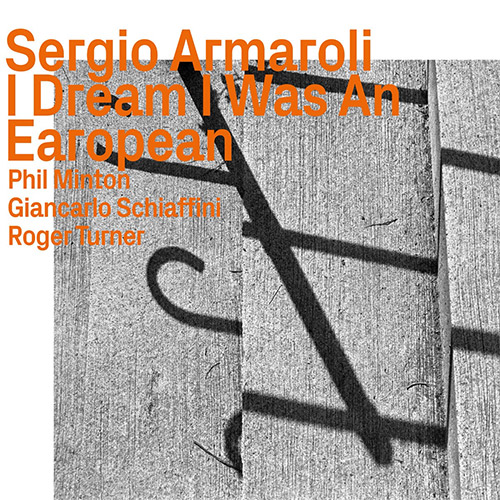
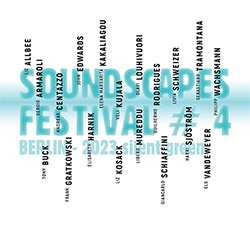
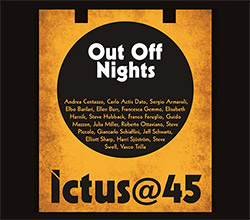
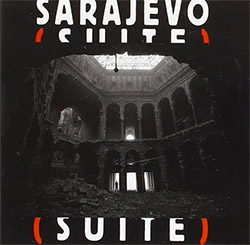
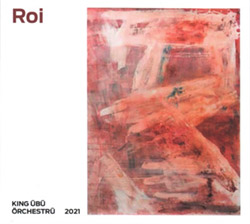
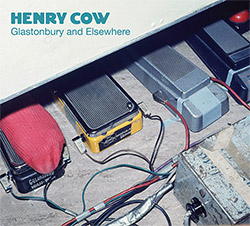
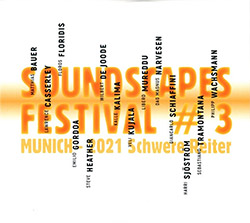
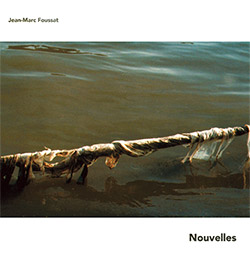
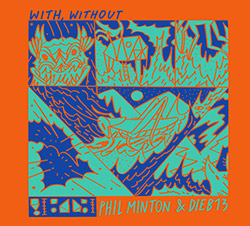
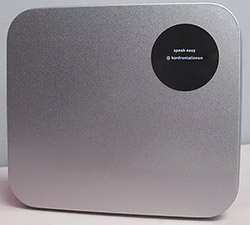
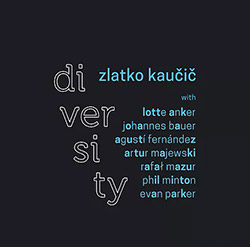
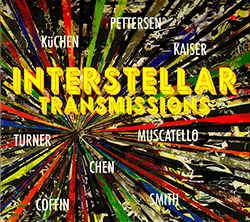
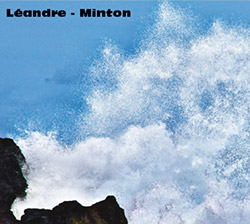
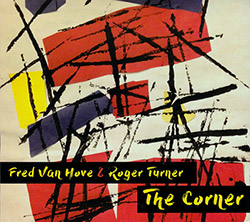

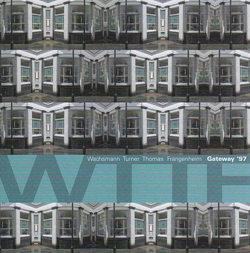
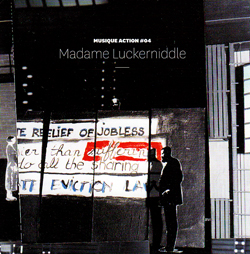
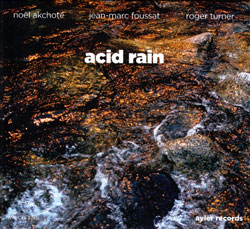
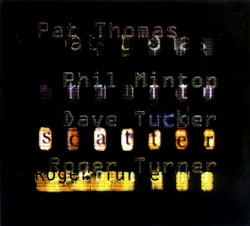
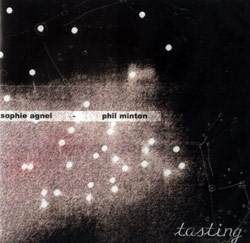
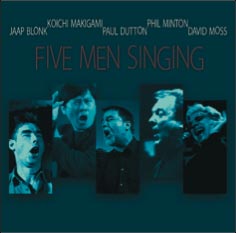
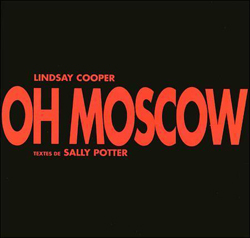
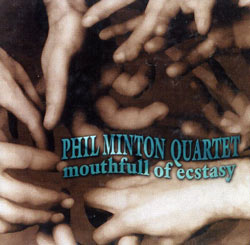
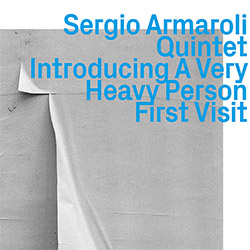
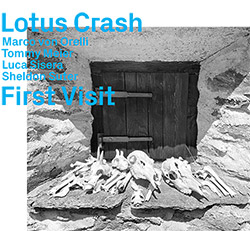


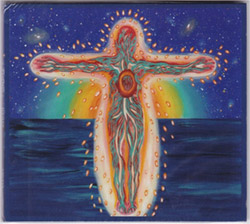
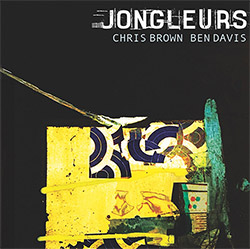
![BlueRing Improvisers: Materia [2 CDs]](https://www.teuthida.com/productImages/misc4/36513.jpg)
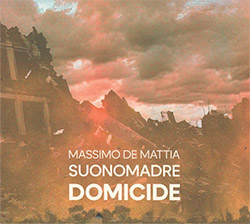
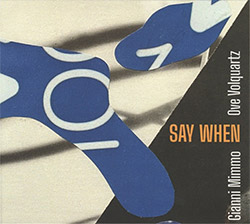
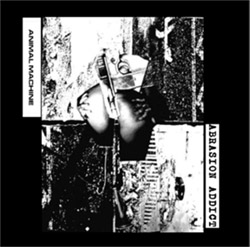
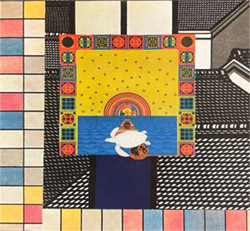
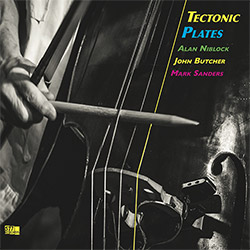
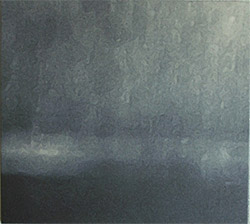

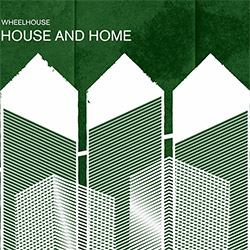
![Wheelhouse (Rempis / Adasiewicz / McBride): House And Home [VINYL]](https://www.teuthida.com/productImages/misc4/36462.jpg)
![+DOG+: The Light Of Our Lives [2 CDs]](https://www.teuthida.com/productImages/misc4/36009.jpg)

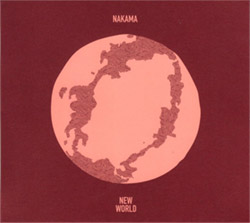
![Parker, Evan / Jean-Marc Foussat: Insolence [VINYL]](https://www.teuthida.com/productImages/misc4/36398.jpg)
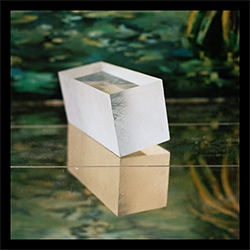
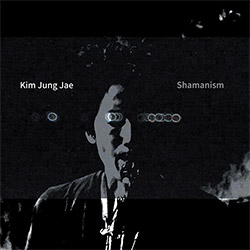
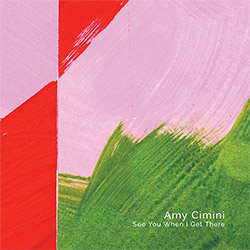
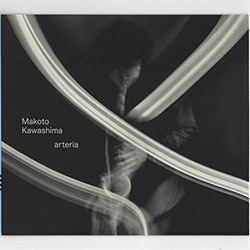
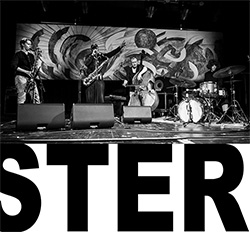
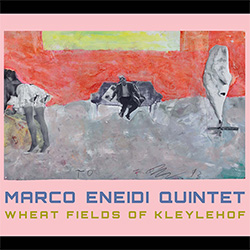
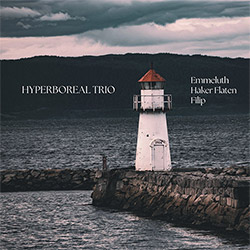
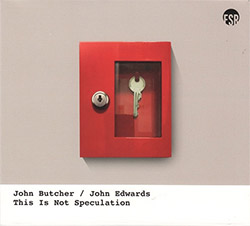
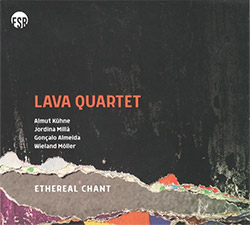
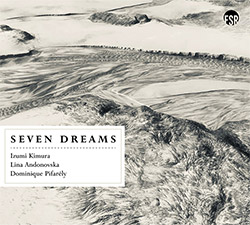
![Deupree, Jerome / Sylvie Courvoisier / Lester St. Louis / Joe Morris: Canyon [2 CDs]](https://www.teuthida.com/productImages/misc4/36404.jpg)
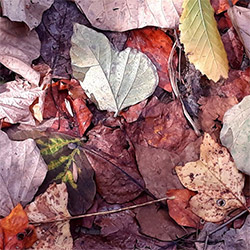
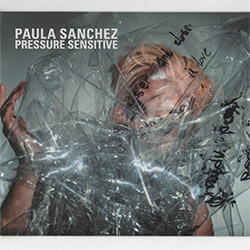
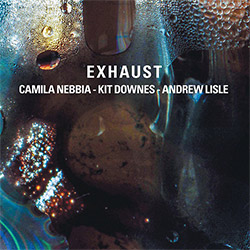
![Eventless Plot | Haarvol: The Subliminal Paths [CASSETTE + DOWNLOAD]](https://www.teuthida.com/productImages/misc4/36232.jpg)
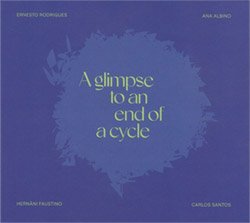
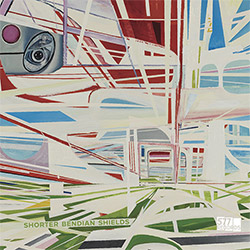
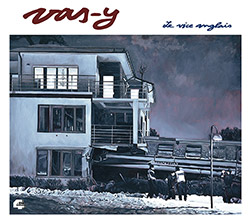
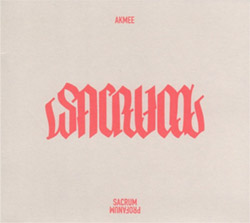

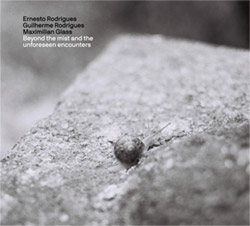
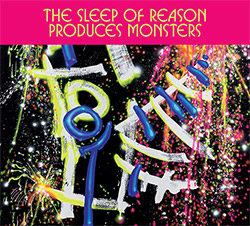
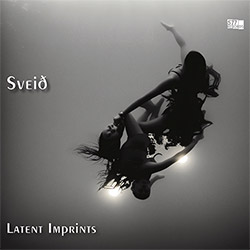
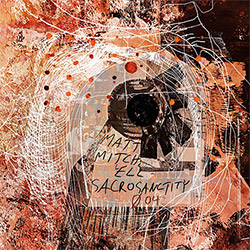
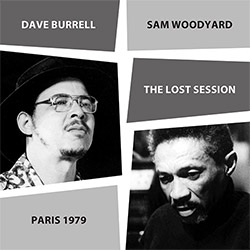
![Eventless Plot | Francesco Covarino: Methexis [CASSETTE + DOWNLOAD]](https://www.teuthida.com/productImages/misc4/36231.jpg)
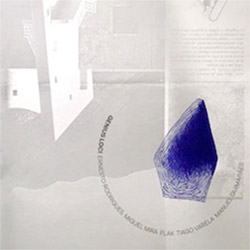
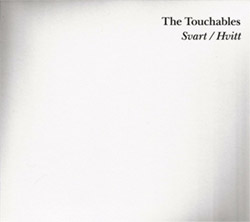

![Das B (Mazen Kerbaj / Mike Majkowski / Magda Mayas / Tony Buck): Love [VINYL]](https://www.teuthida.com/productImages/misc4/36329.jpg)
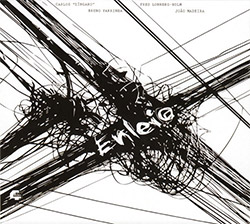
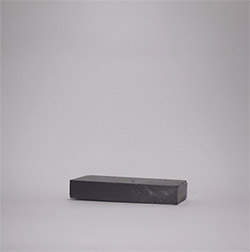
![Eternities: Rides Again [CASSETTE]](https://www.teuthida.com/productImages/misc4/36247.jpg)
![Lopez, Francisco: Untitled (2021-2022) [2 CDs]](https://www.teuthida.com/productImages/misc4/36438.jpg)
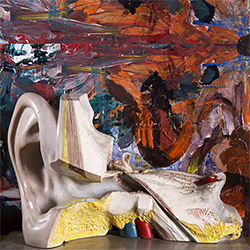

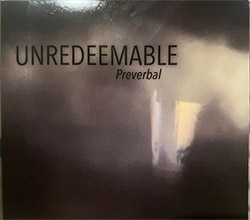
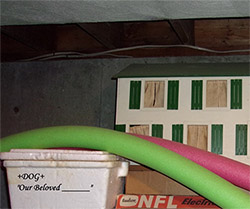
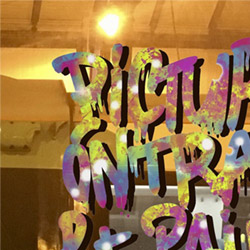
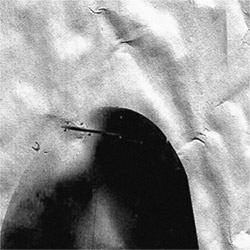
![Money : Money 2 [2 CDs]](https://www.teuthida.com/productImages/misc4/35894.jpg)
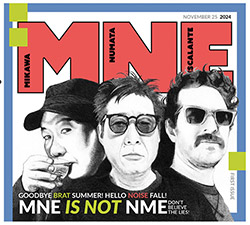
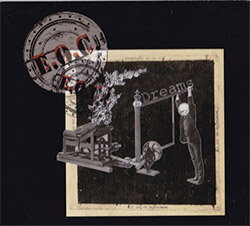
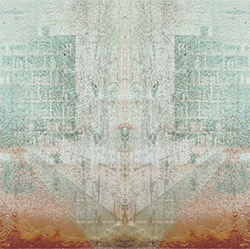
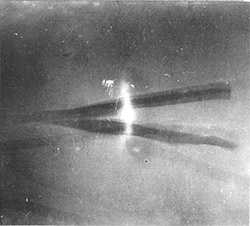
![Klinga, Erik: Elusive Shimmer [VINYL]](https://www.teuthida.com/productImages/misc4/36258.jpg)
![CHANGES TO blind (Phil Zampino): Volume 9 - I Wave on a Fine Vile Mist [CD + DOWNLOAD]](https://www.teuthida.com/productImages/misc4/36061.jpg)

![Wallmart / Rubbish: Asset Protection [split CD]](https://www.teuthida.com/productImages/misc4/35900.jpg)
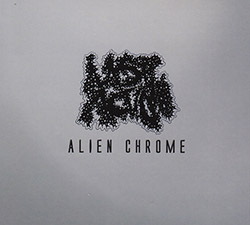
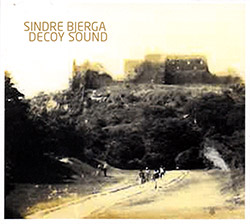
![+Dog+: The Family Music Book Vol. 5 [2 CDs]](https://www.teuthida.com/productImages/misc4/35897.jpg)
![Kuvveti, Deli : Kuslar Soyledi [CASSETTE w/ DOWNLOAD]](https://www.teuthida.com/productImages/misc4/36107.jpg)
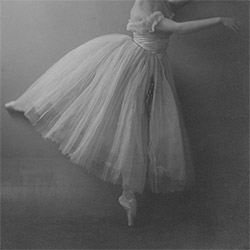
![Brown, Dan / Dan Reynolds: Live At The Grange Hall [unauthorized][CASSETTE]](https://www.teuthida.com/productImages/misc4/36245.jpg)
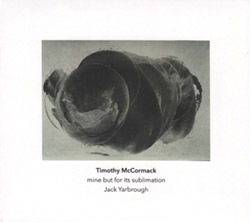
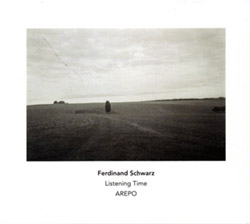
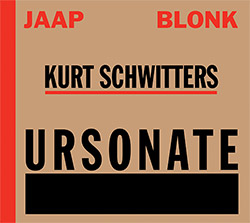
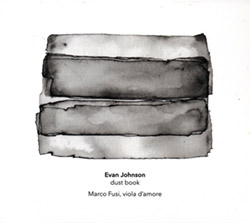
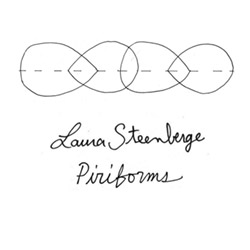
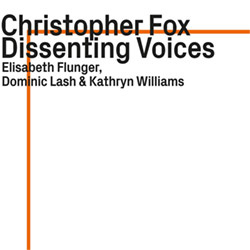
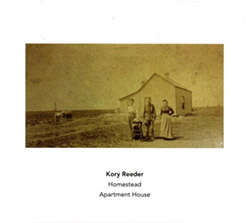
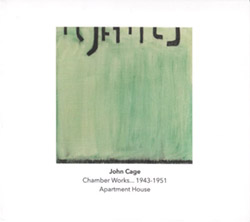
![Palestine, Charlemagne / Seppe Gebruers: Beyondddddd The Notessssss [VINYL]](https://www.teuthida.com/productImages/misc4/36206.jpg)
![Palestine, Charlemagne / Seppe Gebruers: Beyondddddd The Notessssss [NEON GREEN VINYL]](https://www.teuthida.com/productImages/misc4/36207.jpg)
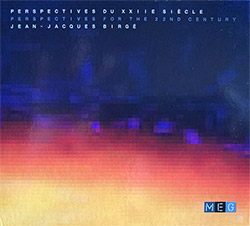
![Laubrock, Ingrid: Purposing The Air [2 CDs]](https://www.teuthida.com/productImages/misc4/35639.jpg)
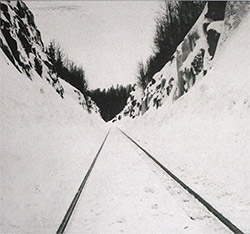
![Yoko, Ono / The Great Learning Orchestra: Selected Recordings From Grapefruit [2 CDs]](https://www.teuthida.com/productImages/misc4/35841.jpg)
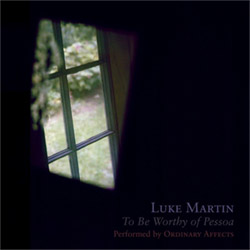
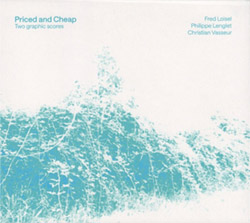
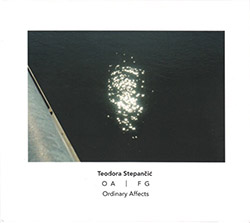
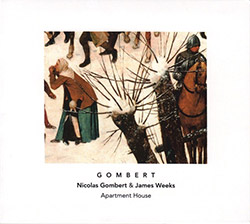
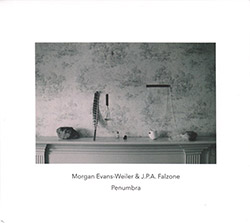
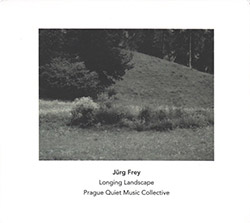
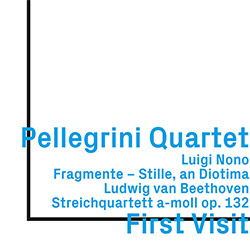
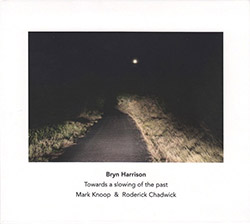
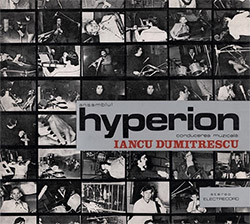
![Zorn, John / JACK Quartet: The Complete String Quartets [2 CDs]](https://www.teuthida.com/productImages/misc4/35609.jpg)
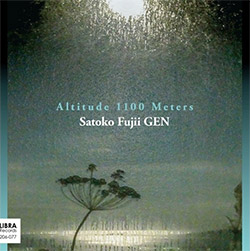
![Lonsdale, Eden: Dawnings [2 CDs]](https://www.teuthida.com/productImages/misc4/35480.jpg)

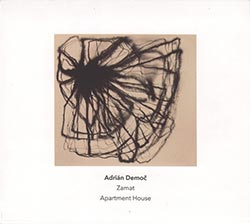
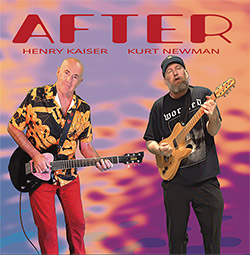
![Sorry For Laughing (G. Whitlow / M. Bates / Dave-Id / E. Ka-Spel): Rain Flowers [2 CDS]](https://www.teuthida.com/productImages/misc4/35985.jpg)
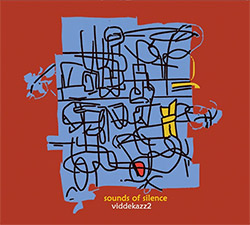
![Rolando, Tommaso / Andy Moor : Biscotti [CASSETTE w/ DOWNLOADS]](https://www.teuthida.com/productImages/misc4/36106.jpg)
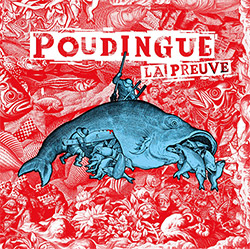
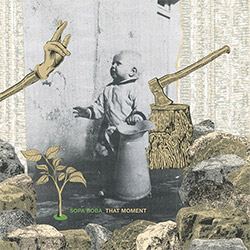
![Electric Bird Noise / Derek Roddy: 8-10-22 [CD EP]](https://www.teuthida.com/productImages/misc4/35970.jpg)
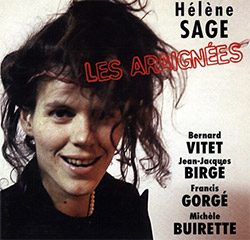

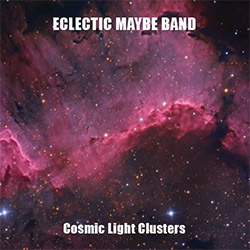
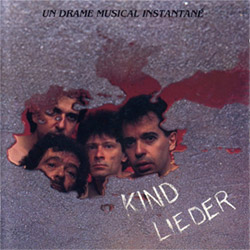
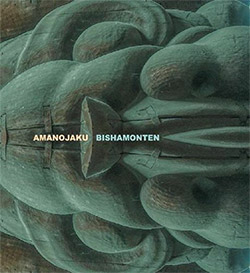
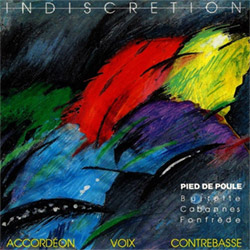
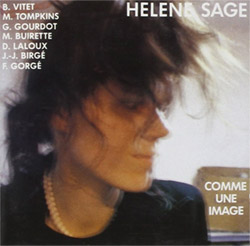
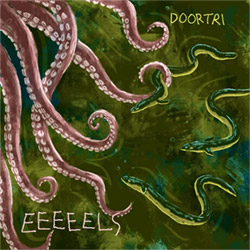
![Elephant9 : Mythical River [VINYL]](https://www.teuthida.com/productImages/misc4/34624.jpg)
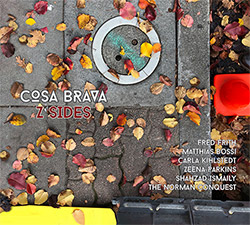
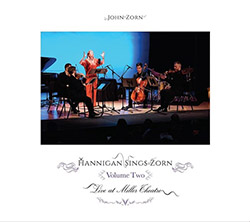
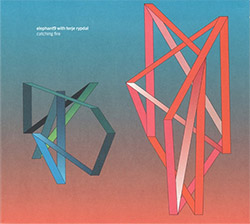
![Elephant9 with Terje Rypdal: Catching Fire [VINYL 2 LPs]](https://www.teuthida.com/productImages/misc4/35355.jpg)
![Deerlady (Obomsawin, Mali / Magdalena Abrego): Greatest Hits [VINYL]](https://www.teuthida.com/productImages/misc4/34876.jpg)
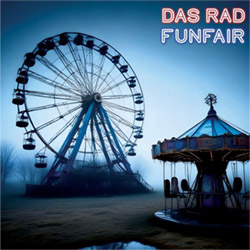
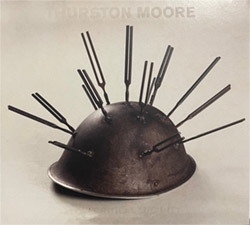
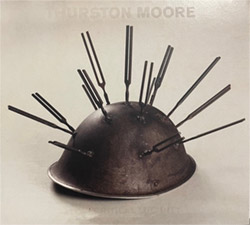
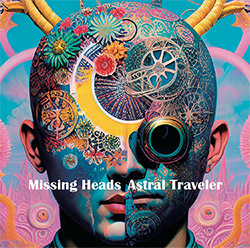
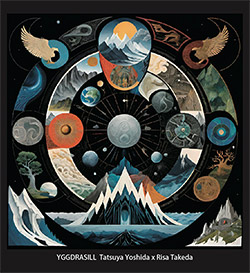
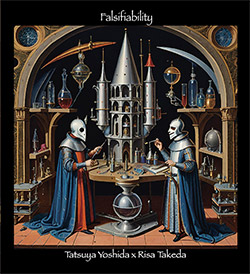
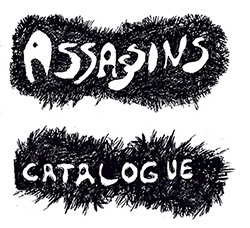
![Surplus 1980: Illusion of Consistency [CD]](https://www.teuthida.com/productImages/misc4/35069.jpg)
![Staiano, Moe: Away Towards the Light [VINYL + DOWNLOAD]](https://www.teuthida.com/productImages/misc4/35037.jpg)
![Coley, Byron: Dating Tips for Touring Bands [VINYL]](https://www.teuthida.com/productImages/misc4/17906.jpg)

![Lost Kisses: My Life is Sad & Funny [DVD]](https://www.teuthida.com/productImages/misc4/lostKissesDVD.jpg)